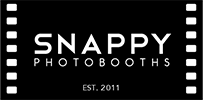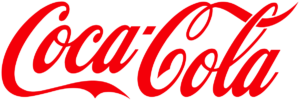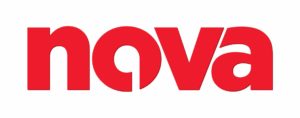In the dynamic world of marketing, brand activations have become a pivotal strategy for engaging consumers and creating memorable experiences. One innovative tool that has proven to be highly effective in these efforts is the photo booth. This article delves into several successful brand activation campaigns that utilised photo booths, illustrating how this technology can enhance consumer engagement, amplify social media reach, and leave a lasting impression on audiences.
The Power of Photo Booths in Brand Activations
Photo booths have evolved significantly from their early days as simple machines for taking passport photos. Today, they are equipped with advanced features such as augmented reality (AR), social media integration, custom branding, and instant sharing capabilities. These features make photo booths an ideal tool for brand activations, allowing companies to interact with their target audience in a fun and engaging way.
Benefits of Photo Booths in Brand Activations
- Enhanced Engagement: Photo booths attract people, encouraging them to interact with the brand.
- Custom Branding: Companies can customise photo booths with their logos, colors, and messages.
- Social Media Amplification: Instant sharing features help amplify the brand’s presence on social media.
- Data Collection: Photo booths can collect valuable data such as email addresses and user preferences.
- Memorable Experiences: They create lasting memories, associating positive experiences with the brand.
Case Studies
1. Coca-Cola’s “Share a Coke” Campaign
Overview: Coca-Cola’s “Share a Coke” campaign is one of the most iconic brand activations that utilised photo booths. The campaign involved personalising Coca-Cola bottles with popular names and encouraging consumers to share their experiences.
Execution: As part of the campaign, Coca-Cola set up interactive photo booths in various locations. These booths allowed users to take pictures with their personalised Coke bottles and instantly share them on social media with the hashtag #ShareACoke.
Results:
- Social Media Reach: The campaign generated over 500,000 photos shared on social media.
- Consumer Engagement: The photo booths attracted thousands of participants, creating a direct interaction with the brand.
- Brand Visibility: The hashtag #ShareACoke trended on social media, significantly boosting Coca-Cola’s online presence.
Check it out: Coca-Cola “Share a Coke” Case Study
2. Samsung’s Galaxy Launch
Overview: For the launch of the Samsung Galaxy series, Samsung aimed to create a memorable and interactive experience for potential customers.
Execution: Samsung installed AR photo booths in key retail locations. These booths allowed users to take photos with virtual representations of the new Galaxy phones. Users could also explore various features of the phone through interactive displays and instantly share their photos on social media.
Results:
- Increased Foot Traffic: The photo booths drew large crowds to the retail locations.
- Enhanced Product Awareness: Consumers could interact with the product’s features in a fun and engaging way.
- Social Media Buzz: Thousands of photos were shared with the hashtag #SamsungGalaxy, generating significant online buzz.
Check it out: Samsung Galaxy Launch Case Study
3. Airbnb’s “Live There” Campaign
Overview: Airbnb’s “Live There” campaign aimed to promote the unique travel experiences available through their platform, encouraging travelers to live like locals.
Execution: As part of the campaign, Airbnb set up themed photo booths in major cities. These booths were designed to look like popular local destinations, allowing users to take pictures as if they were already on their vacation. The photos could be shared instantly on social media, along with personalised travel recommendations from Airbnb.
Results:
- User Engagement: The interactive booths attracted many users, increasing engagement with the campaign.
- Content Generation: Thousands of user-generated photos were shared, boosting the campaign’s visibility.
- Brand Perception: The campaign reinforced Airbnb’s image as a provider of unique and authentic travel experiences.
Check it out: Airbnb “Live There” Campaign
4. Nike’s “Reactland” Experience
Overview: To promote the launch of the Nike React shoe, Nike created an immersive experience called “Reactland” that combined gaming with real-world interactions.
Execution: Nike set up photo booths that transported users into a virtual world where they could test the new React shoe’s features. Users’ movements were captured and integrated into a game, and they could share their in-game photos and videos on social media.
Results:
- Immersive Engagement: The interactive game created a unique and memorable experience for users.
- Product Demonstration: Users experienced the shoe’s features in an engaging way, leading to increased interest and sales.
- Viral Content: The shareable in-game content generated widespread social media buzz.
Check it out: Nike Reactland Campaign
5. Cadbury’s Joy Generator
Overview: Cadbury aimed to spread happiness and promote their chocolate range with the “Joy Generator” campaign.
Execution: Cadbury’s photo booths, called Joy Generators, were equipped with facial recognition technology to detect users’ emotions and recommend a chocolate variety based on their mood. Users could take photos with their recommended chocolate and share them on social media.
Results:
- Personalised Experience: The facial recognition technology provided a personalised and interactive experience.
- Increased Sales: The campaign boosted sales by encouraging users to try different chocolate varieties.
- Social Media Engagement: The shareable photos and personalised recommendations drove social media engagement.
Check it out: Cadbury Joy Generator Campaign
These case studies illustrate the effectiveness of photo booths in brand activations. By offering engaging, interactive, and memorable experiences, photo booths help brands connect with their audience in meaningful ways. They also leverage the power of social media to amplify the campaign’s reach and impact. As technology continues to evolve, photo booths are likely to remain a valuable tool for marketers looking to create successful brand activations.























































